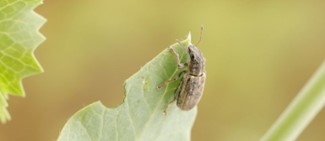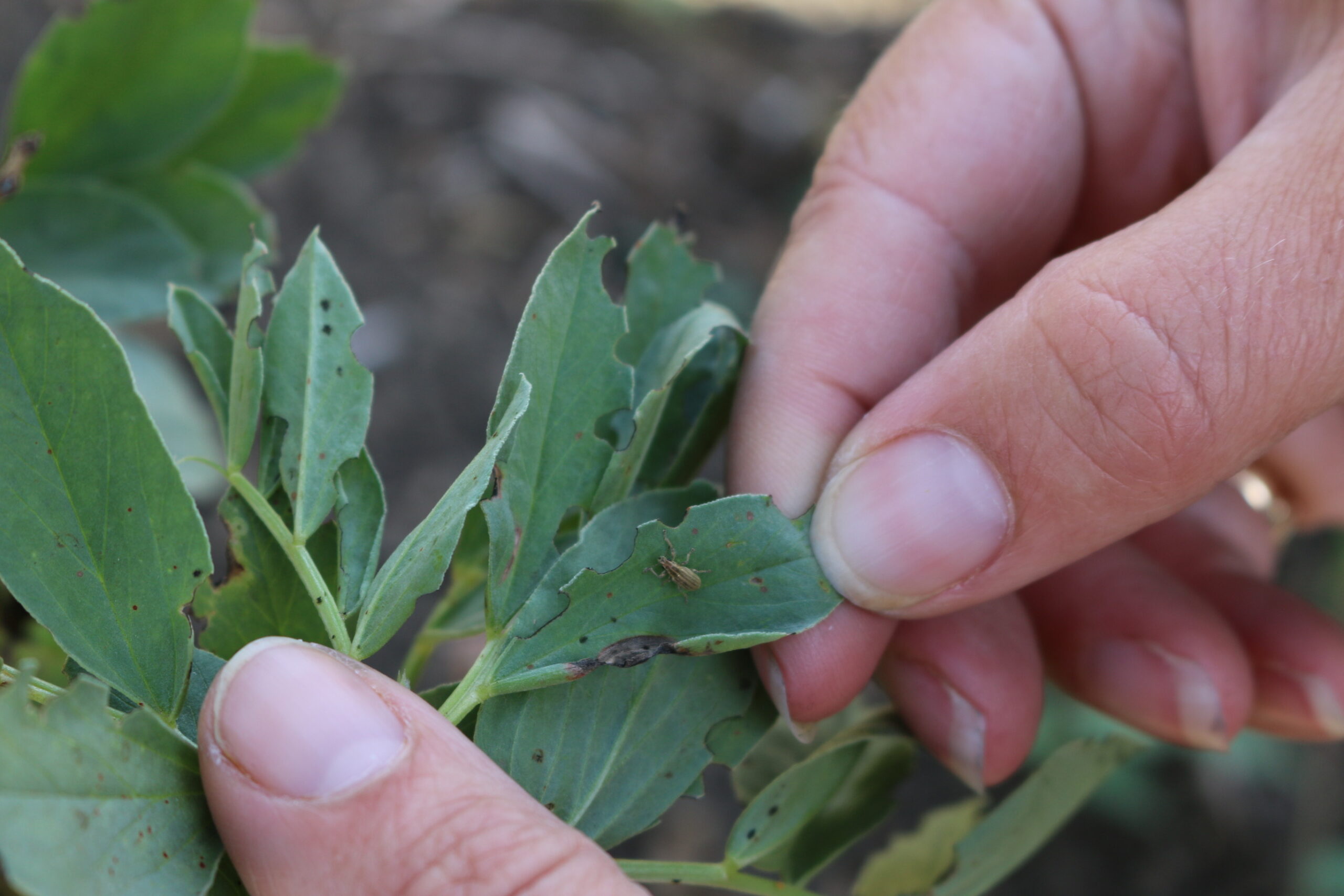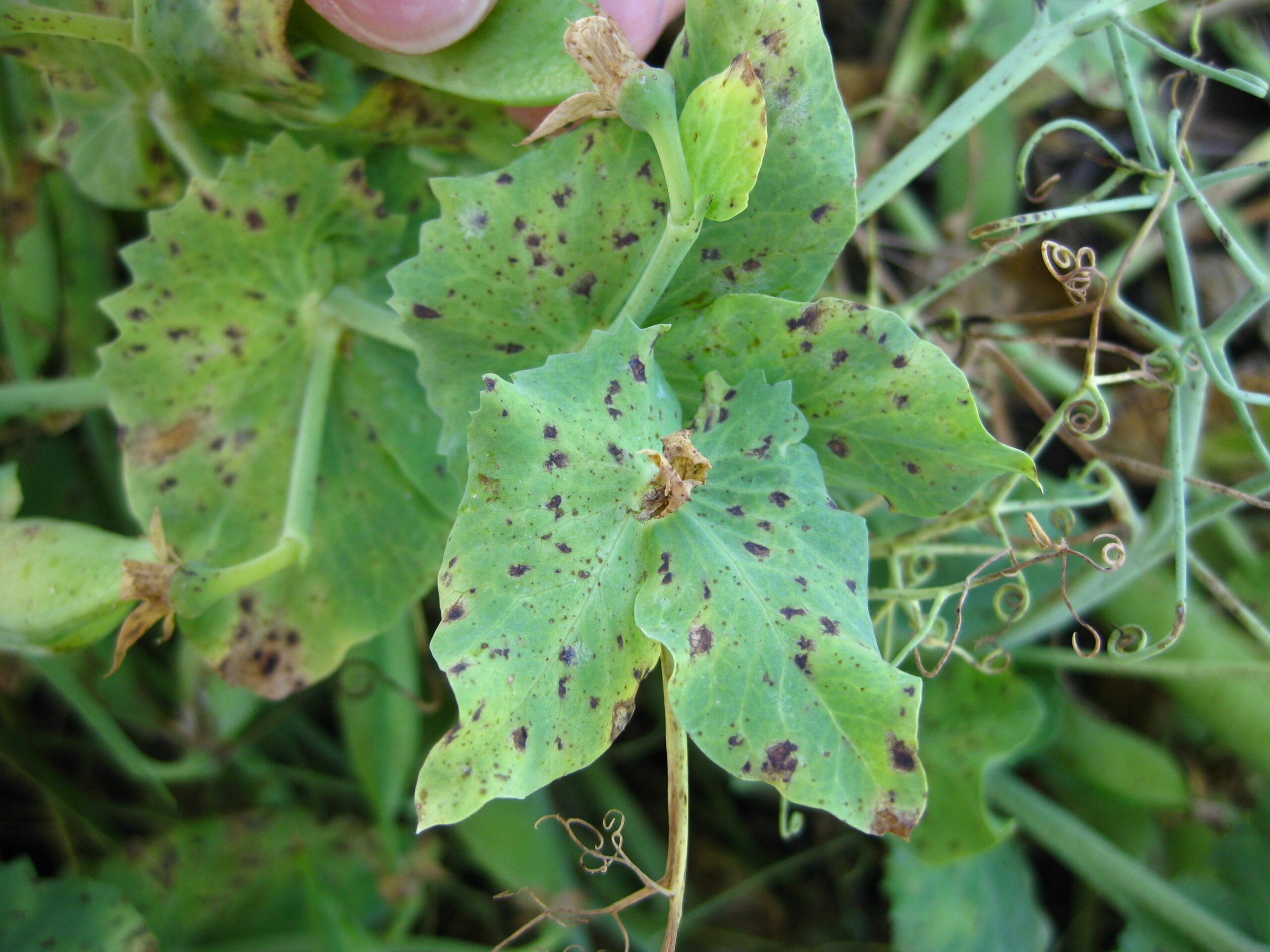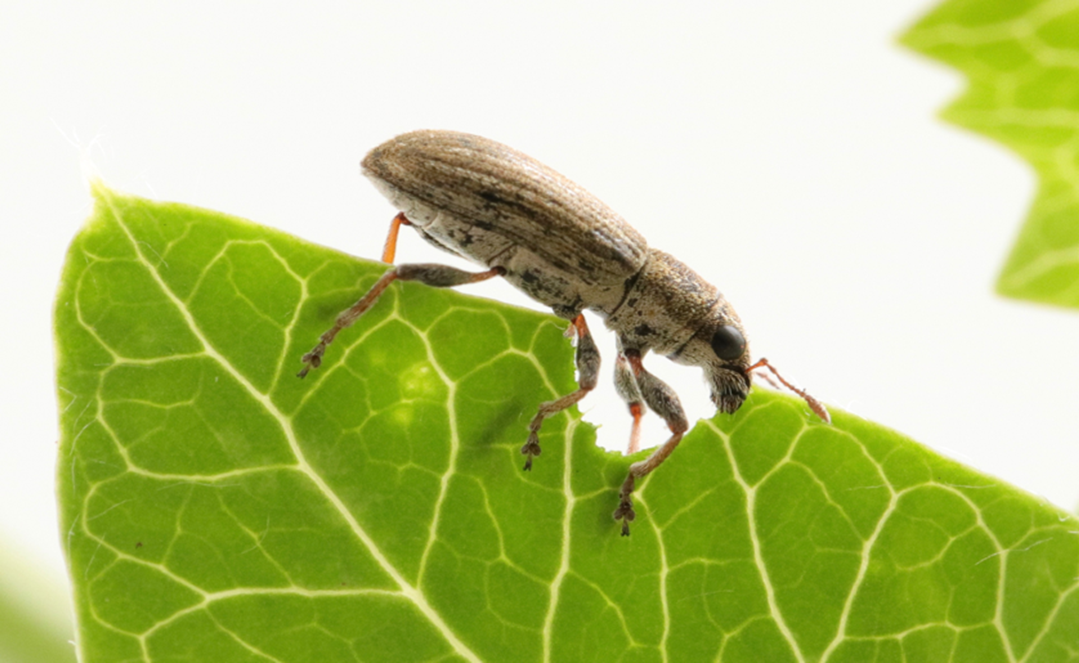Principal Investigator: Dr. Meghan Vankosky
Institution: Agriculture and Agri-Food Canada, Saskatoon, Sask.
Prepared by: Nate Ort, M.Sc.
This project led by Dr. Meghan Vankosky of Agriculture and Agri-Food Canada in Saskatoon investigated biological (natural predators) control, and alternative control methods to manage pea leaf weevil (PLW) in field pea and faba bean.
Biological Control

Source: Jonathon Williams, AAFC
The first objective of this project was to identify the natural enemies of pea leaf weevil and to evaluate their impact on weevil populations. Pitfall traps were deployed in Alberta and Saskatchewan pulse crops to determine the diversity of potential natural enemies. The most frequently collected potential natural predators of pea leaf weevil belonged to the families Carabidae (ground beetles) and Staphylinidae (rove beetles). Other beetle families that were collected frequently included Silphidae (carrion beetles) and dung beetles. The most common ground beetle species found in the traps was Pterosticus melanarius which is an invasive species. This beetle is known to prey on adult pea leaf weevil in the Pacific Northwest of the United States and its impact on adult weevil populations is actively being tested by the investigators in laboratory bioassays at the University of Alberta.
Based on preliminary data analyses from the 2018 and 2019 collection years, the investigators reported trends in ground beetle populations and species composition in which P. melanarius was found less frequently in the Peace River region of Alberta than in the more Southern and Central parts of this province. Due to this trend the investigators think that P. melanarius should be further investigated as a potential predator of pea leaf weevil adults.
Alternative Control Methods

Source: Errin Willenborg and Dr. Meghan Vankosky
In the second objective of this project, mass trap-and-kill and trap crop management techniques were explored as alternatives to conventional management with insecticides. Trap crops can be used to concentrate the target pest to significantly limit the area treated with foliar insecticides or other control agents. In 2019 and 2020, both the field pea and faba bean trap crops were attractive to adult weevils in the spring and late summer and the investigators found that faba bean was more attractive to pea leaf weevil and should be explored further as a trap crop. Pitfall traps in the spring- and summer-planted trap strips that were not baited with a pheromone caught more adult pea leaf weevils than the pheromone baited pitfall traps in summer-planted trap strips. These preliminary results suggest that mass trap-and-kill may be more effective when deployed in the spring than in the summer.
The investigators then tested the efficacy of a foliar insecticide, a fungal pathogen, and a juvenile hormone analogue as potential foliar treatments for reducing pea leaf weevil populations in the trap crops. Of these three treatments, only the foliar insecticide significantly reduced the damage to pea seedlings relative to the control. Other factors regarding the insecticidal application (timing, product rate, water rate, etc.) in trap strips should be investigated for trap strips to be optimized for pea leaf weevil management.
Key Findings
- The most common natural predator of pee weevil were ground beetle species with Pterosticus melanarius being the most commonly found in the pitfall traps. This invasive species must be further researched to understand its effect on pea leaf weevil populations in Canada.




